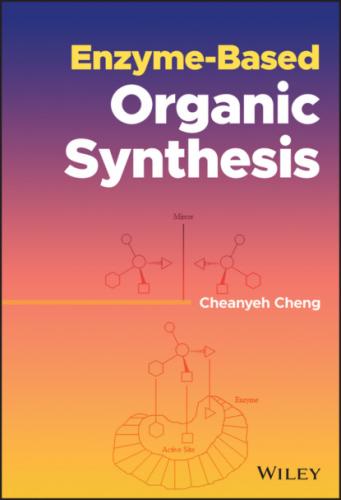Scheme 2.42 Asymmetric bioreduction of citraconic acid dimethylester via a coupled‐substrate system.
Scheme 2.43 BY fermentations and OYEs 1–3 mediated bioreductions of substrates 1–6.
The reduction of the double bond associated with α,β‐unsaturated ketones and catalyzed by microorganisms, animal, and plant cell cultures has long been studied and known by synthetic organic chemists. However, a strain of filamentous fungus identified as Aspergillus versicolor and named A. versicolor D‐1 was isolated and used for the reduction of the γ,δ‐double bond of the conjugated lactone in securinine to produce 14,15‐dihydrosecurinine with high stereospecificity (Scheme 2.44) [186]. The NADPH‐dependent securinine reductase found in A. versicolor D‐1 is a cytosolic enzyme and is highly inducible in growing/resting cultures for securinine reduction. Moreover, it will not reduce the α,β‐double bond in 14,15‐dihydrosecurinine further. It was also found that the reductase is thermally unstable.
Scheme 2.44 The reduction of γ,δ‐double bond of the conjugated lactone in securinine.
References
1 1 Molinari, F. (2006). Curr. Org. Chem. 10: 1247–1263.
2 2 Bouonomenna, M.G. and Drioli, E. (2008). Org. Process Res. Dev. 12: 982–988.
3 3 Jia, A.Z., Lou, L.L., Zhang, C. et al. (2009). J. Mol. Catal. A 306: 123–129.
4 4 Celik, D., Bayraktar, E., and Mehmetoglu, D. (2004). Biochem. Eng. J. 17: 5–13.
5 5 Molinari, F., Gandolfi, R., Aragozzini, F. et al. (1999). Enzyme Microb. Technol. 25: 729–735.
6 6 Wu, J., Wang, J.‐L., Li, M.‐H. et al. (2010). Bioresour. Technol. 101: 8936–8941.
7 7 Orbegozo, T., Lavandera, I., Fabian, W.M.F. et al. (2009). Tetrahedron 65: 6805–6809.
8 8 Sagiroglu, A. and Yavuz, M.O. (2005). Artif. Cells Blood Substit. Biotechnol. 33: 343–355.
9 9 Norouzian, D., Akbarzadeh, A., Inanlou, D.N. et al. (2003). Enzyme Microb. Technol. 33: 150–153.
10 10 Carballeira Rodríguez, J.D., García‐Burgos, C., Quezada Alvarez, M.A. et al. (2004). Biotechnol. Bioeng. 87: 632–640.
11 11 Jia, X., Xu, Y., and Li, Z. (2011). ACS Catal. 1: 591–596.
12 12 Hilterhaus, L. and Liese, A. (2007). Adv. Biochem. Eng. Biotechnol. 105: 133–173.
13 13 Oedman, P., Wessjohann, L.A., and Bornscheuer, U.T. (2005). J. Org. Chem. 70: 9551–9555.
14 14 Hirscher, T., Gocke, D., Fernandez, M. et al. (2005). Tetrahedron 61: 7378–7383.
15 15 Scheid, G., Kuit, W., Ruijter, E. et al. (2004). Eur. J. Org. Chem. 2004: 1063–1074.
16 16 Nestl, B.M., Voss, C.V., Bodlenner, A. et al. (2007). Appl. Microbiol. Biotechnol. 76: 1001–1008.
17 17 Demir, A.S., Hamamci, H., Sesenoglu, O. et al. (2001). Tetrahedr. Asymm. 12: 1953–1956.
18 18 Smalleridge, A.J., Trewhalla, M.A., Maurice, A., and Wilkinson, A.K. (2003). Patent WO 2003018531 A1 20030306.
19 19 Rosche, B., Breuer, M., Hauer, B., and Rogers, P.L. (2004). Biotechnol. Bioeng. 86: 788–794.
20 20 Engel, S., Vyazmensky, M., Geresh, H. et al. (2003). Biotechnol. Bioeng. 83: 640–833.
21 21 Cheng, Y., Zhang, F., Rano, T.A. et al. (2002). Bioorg. Med. Chem. Lett. 12: 2419–2422.
22 22 Lunardi, I., Conceicao, G.J.A., Moran, P.J.S., and Rodrigues, J.A.R. (2005). Tetrahedr. Asymm. 16: 2515–2519.
23 23 Mitsukura, K., Sato, Y., Yoshida, T., and Nagasawa, T. (2004). Biotechnol. Lett. 26: 1643–1648.
24 24 Tanaka, M., Hirokane, Y., Mitsui, R., and Tsuno, T. (2001). J. Biosci. Bioeng. 91: 267–271.
25 25 Vicente, C., Fontaniella, B., Millanes, A.M. et al. (2003). Int. J. Cosmet. Sci. 25: 25–29.
26 26 Seshardri, R., Lamm, A.S., Khare, A., and Rosazza, J.P.N. (2008). Enzyme Microb. Technol. 43: 486–494.
27 27 Hamme, J.D., Singh, A., and Ward, O.P. (2003). Microbiol. Mol. Boil. Rev. 67: 503–549.
28 28 Beilen, J.B., Li, Z., Duetz, W.A. et al. (2003). Oil Gas Sci. Technol. 58: 427–440.
29 29 Labinger, J.A. (2004). J. Mol. Catal. A 220: 27–35.
30 30 Ayala, M. and Torres, E. (2004). Appl. Catal. A 272: 1–13.
31 31 van Beilen, J.B. and Funhoff, E.G. (2005). Curr. Opin. Biotechnol. 16: 308–314.
32 32 Bernhardt, R. (2006). J. Bacteriol. 124: 128–145.
33 33 Funhoff, E.G. and van Beilen, J.B. (2007). Biocatal. Biotransformation 25: 186–193.
34 34 Kawakami, N., Shoji, O., and Watanabe, Y. (2011). Angew. Chem. Int. Ed. 50: 5315–5318.
35 35 Weber, E., Seifert, A., Antonovici, M. et al. (2011). Chem. Commun. 47: 944–946.
36 36 Bordeaux, M., Galarneau, A., Fajula, F., and Drone, J. (2011). Angew. Chem. Int. Ed. 50: 2075–2079.
37 37 Scheps, D., Malca, S.H., Hoffmann, H. et al. (2011). Org. Biomol. Chem. 9: 6727–6733.
38 38 van Beilen, J.B., Funhoff, E.G., van Loon, A. et al. (2006). Appl. Environ. Microbiol. 72: 59–65.
39 39 Funhoff, E.G., Bauer, U., Garcia‐Rubio, I. et al. (2006). J. Bacteriol. 188: 5220–5227.
40 40 Funhoff, E.G., Salzmann, J., Bauer, U. et al. (2007). Enzyme Microb. Technol. 40: 806–812.
41 41 Dubbels, B.L., Sayavedra‐Soto, L.A., and Arp, D.J. (2007). Microbiology 153: 1808–1816.
42 42 Craft, D.L., Madduri, K.M., Eshoo, M., and Wilson, C.R. (2003). Appl. Environ. Microbiol. 69: 5983.
43 43 Tani, A., Ishige, T., Sakai, Y., and Kato, N. (2001). J. Bacteriol. 183: 1819.
44 44 Feng, L., Wang, W., Cheng, J. et al. (2007). Proc. Natl. Acad. Sci. U. S. A. 104: 5602.
45 45 Maeng, J.H., Sakai, Y., Tani, Y., and Kato, N. (1996). J. Bacteriol. 178: 3695.
46 46 Li, L., Liu, X., Yang, W. et al. (2008). J. Mol. Biol. 376: 453–465.
47 47 Throne‐Holst, M., Markussen, S., Winnberg, A. et al. (2006). Appl. Microbiol. Biotechnol. 72: 353–360.
48 48 Peter, S., Kinne, M., Wang, X. et al. (2011). FEBS J. 278: 3667–3675.
49 49
